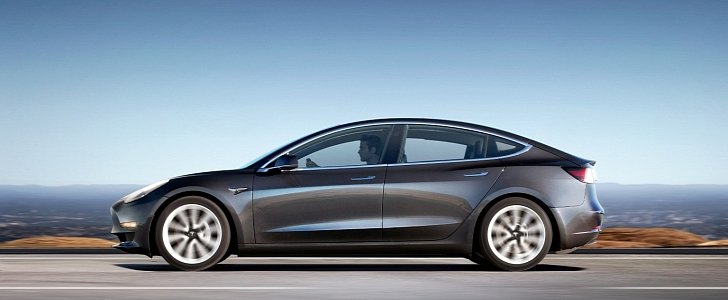Earlier this week, Tesla reported its Q3 production and delivery figures, and the company is fresh off its best three-months since the Model S sales started in 2012. That, however, has nothing to do with the company's first mass-market product.
To be fair, the Model 3 wasn't meant to have that big of an impact anyway even if it did stick to the forecast. Tesla said it aimed to build 1,500 of them in September but only managed to finish 260, with 220 of them reaching their new owners. But even missing the Model 3 target by nearly 80 percent, Tesla still managed to deliver a record number of Models S and X EVs.
Elon Musk's company blamed the shortage on "production bottlenecks" that, in turn, were down to the late activation of several assembly processes at both the Palo Alto and Reno factories. “Although the vast majority of manufacturing subsystems at both our California car plant and our Nevada Gigafactory are able to operate at high rate, a handful have taken longer to activate than expected,” the company said.
What it failed to reveal, at least according to sources quoted by the Wall Street Journal (paywall), is that production went on at a much lower rate despite these shortcomings. The publication claims that a special area of the plant was assigned to hand assembly where workers put various pieces together manually. This has allegedly gone on at least one week into September.
Having something built by hand is usually a good thing. Mercedes-AMG, for example, prides itself on having all its V8 and V12 engine assembled mostly by hand by just one person who, as a final touch, installs a plate bearing their signature. No Tesla Model 3 owners reported finding any signed parts on their vehicles, but then again they were awfully quiet about them altogether.
What makes this a bit more questionable is that Tesla did it without letting the public know. Since all the Model 3 reservation holders to have received their vehicles so far are either company employees or insiders, we can't be sure whether they have been informed or not.
The real issue here is that Tesla was supposed to use these initial months as an extended testing period, but the idea was to test the production cycle as well as the vehicle. With the former failing to perform, that means we might be looking at further delays in the promised ramp-up. One first example is the second postponement of the Semi event: initially moved from the end of September to October 26, it has now been switched to November 16.
Elon Musk's company blamed the shortage on "production bottlenecks" that, in turn, were down to the late activation of several assembly processes at both the Palo Alto and Reno factories. “Although the vast majority of manufacturing subsystems at both our California car plant and our Nevada Gigafactory are able to operate at high rate, a handful have taken longer to activate than expected,” the company said.
What it failed to reveal, at least according to sources quoted by the Wall Street Journal (paywall), is that production went on at a much lower rate despite these shortcomings. The publication claims that a special area of the plant was assigned to hand assembly where workers put various pieces together manually. This has allegedly gone on at least one week into September.
Having something built by hand is usually a good thing. Mercedes-AMG, for example, prides itself on having all its V8 and V12 engine assembled mostly by hand by just one person who, as a final touch, installs a plate bearing their signature. No Tesla Model 3 owners reported finding any signed parts on their vehicles, but then again they were awfully quiet about them altogether.
What makes this a bit more questionable is that Tesla did it without letting the public know. Since all the Model 3 reservation holders to have received their vehicles so far are either company employees or insiders, we can't be sure whether they have been informed or not.
The real issue here is that Tesla was supposed to use these initial months as an extended testing period, but the idea was to test the production cycle as well as the vehicle. With the former failing to perform, that means we might be looking at further delays in the promised ramp-up. One first example is the second postponement of the Semi event: initially moved from the end of September to October 26, it has now been switched to November 16.

